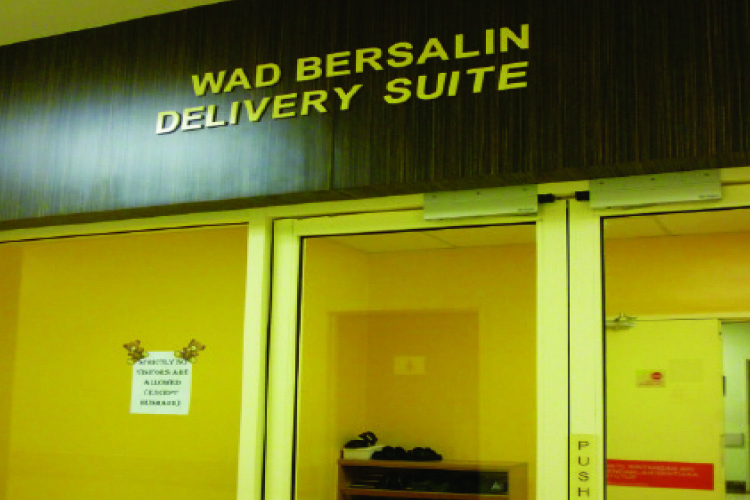With Caesarean sections on the rise, childbirth educator and lactation consultant Christine Choong talks about the contributing factors during labour that will encourage and lead to natural deliveries in hospitals.
The key to a mother achieving a natural birth is the attitude of the people surrounding and supporting her. Women are having beautiful natural births in small bathrooms in their own homes, so it is not the environment but their beliefs to give birth without interventions that is so important.Therefore, it would be helpful to the majority of women if all persons working in the labour/delivery wards – doctors, midwives and ancillary staff – regarded birth as a natural process and adopted a positive and encouraging approach to the birthing family.
Table of Contents
Birth plan
All birthing women should be treated with respect and their preferences for birth should be acknowledged. If a woman has written a birth plan, which she has discussed with her doctor, it should be adhered to. Mothers should be allowed to choose the birthing positions which they find most comfortable and which facilitate the birth process. They should be encouraged to eat and drink during labour to keep energy levels up. If they prefer, they should be able to wear their own clothing during labour. Ideally, babies should be given immediately to the mother at the time of birth and remain undisturbed skin-to-skin with the mother until after the first breastfeed. This process should only be disturbed in the event of a medical emergency.
Birth partner
They should be encouraged to bring into the hospital the birth support people of their choice. If a mother-to-be wishes, that should include one additional person other than her spouse.
Birth Aids
Items which can help mothers achieve more comfortable positions during labour such as birth balls, simple upright wooden chairs that mothers can sit astride, additional pillows with soft pillow cases and possibly bean bags should be readily available in each hospital.
Ambience
Preferably, the birthing rooms should provide a quiet, relaxed environment with an attached bathroom and minimal amount of medical equipment visible. When a woman is in a quiet, dim environment during labour, she tends to switch to the primitive side of her brain which enables her to become very focused on what her birthing body is doing. Therefore, it would be helpful if the labour ward staff maintain a peaceful environment, talk softly, open doors and equipment quietly as well as refrain from switching on bright lights. Before doing any assessments, an explanation should be given quietly to the mother and her permission requested. Mothers should not be disturbed or distracted during a contraction.
Medical Interventions
I appreciate that there are a small number of instances where emergency care or interventions are required but they should be the minority, not the majority as currently seems to be occurring. For a woman desiring to have a natural birth, it is helpful to refrain from references to pain and only discuss pain-relieving drugs at her request. All maternity staff should be trained in, and should recommend drug-free methods of working through labour. These should include slow breathing and relaxation, comfort positions, use of massage, heat and warm water if a shower or birth pool is available.
In instances where labour is progressing slowly and considered essential to speed it up, then it would be appropriate to suggest natural methods which would result in less discomfort. The doctor could also discuss with the parents whether it is medically necessary to speed up the labour – some births just take a longer time and many women are happy to let labour progress at its own rate. This should be the parents’ choice.
If it is considered necessary to use any interventions, the parents should be given a detailed explanation, including benefits and risks of the procedures, and should be involved in decision making. Interventions should only be suggested according to evidence-based recommendations.
Medical Equipment
Providing a birth pool is recommended too. Cordless monitoring would be useful as this enables mothers to be up and around and even in the pool with continuous foetal heart rate monitoring. When mothers are forced to lie in bed during the monitoring, it increases their sensation of pain and results in many resorting to pain medication. Currently, the Singapore University Hospital implements cordless monitoring.
Mobile resuscitation trolleys for babies in labour rooms would also be helpful. It is distressing for both mother and baby if the newborn is immediately removed from the mother for resuscitation. Much could be done with baby lying on the mother’s abdomen. This way, baby would be comforted by hearing the reassuring body sounds of the mother and mother would be less anxious as she could see exactly what is happening with her baby.
Room Amenities
It would be ideal to have individual air conditioner controls as well as comfortable bed sheets and pillow cases as the disposables are usually hot and uncomfortable. I would prefer to see labour rooms without clocks. Constantly seeing the time can be off-putting. Baby warmers should not be necessary too. The warmest place for a baby to be is on the mother’s chest, where otherwise may have a major impact on the initiation of breastfeeding. The baby warmer can be used to heat up blankets to place over mum and baby during that first feed, but it does not need to be in the room.
















